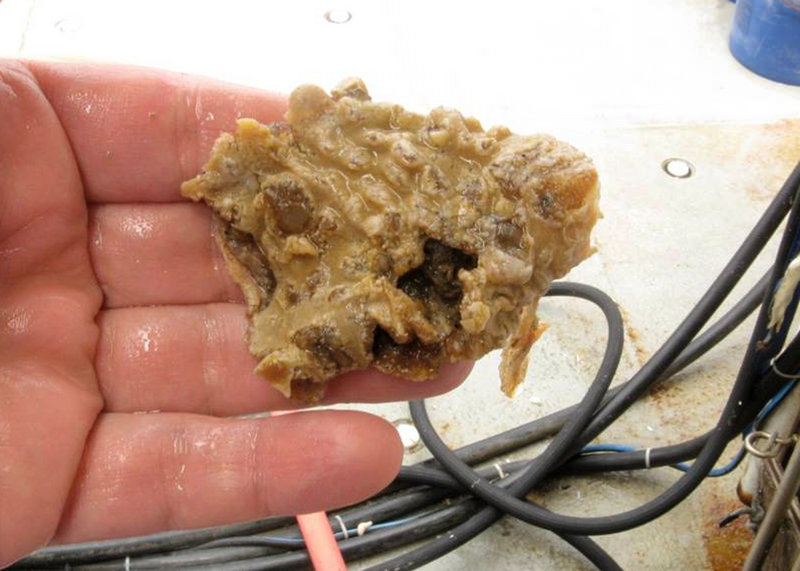BOSTON – An invasive sea squirt is increasingly being found spread like batter on the ocean floor off New England, but new research shows that’s not all bad news, despite fears about damage the animal could cause.
The sea squirt rapidly expands on hard ocean bottom in rope-like chains or mats, and scientists worry it could crowd out valuable species that live on or near the sea floor, such as scallops.
But new evidence shows that some sea life and the fish that eat it actually thrive in regions where the sea squirt has taken hold. It’s an unexpectedly positive spin to the intrusion of a species scientists acknowledge they don’t fully understand.
“This seems to be like the ecosystem is just sort of (saying): ‘OK, if you’re able to withstand that and survive here, then you might actually find it favorable and benefit to some degree,’ ” said Brian Smith, a federal food web ecologist who’s studying how the sea squirts are affecting groundfish diets.
“Sea squirt” is the common name for various species, including the invasive Didemnum vexillum. Found worldwide, this species likely made its way to New England in the 1970s or 1980s in shipments of shellfish from Japan, said Judith Pederson, a scientist with the MIT Sea Grant program.
The animal, since found south to Long Island Sound, looks like a tiny tadpole in its youngest stages, but is similar to a sponge as an adult, with a firm, flexible outer covering. The animal reproduces after fragments break off and attach to hard surfaces, forming colonies said to look like pancake batter.
The sea squirts didn’t get much local attention until they were discovered in 2002 in a seven-square-mile patch of northern Georges Bank, the rich fishing grounds about 60 miles east of Cape Cod. Scientists have since found it in three areas of Georges Bank totaling about 180 square miles so far, although it doesn’t appear to be nearing domination of the vast 26,000-square-mile area.
Much of Georges Bank has a sandy or shifty bottom where the sea squirts can’t get a firm grip, and they also appear to recede when the waters get colder.
Still, the hard, gravelly areas where the sea squirts flourish are also a prime environment for scallops and important groundfish species, such as cod, haddock and flounder. Pederson said the sea squirts can perhaps harm scallops by growing over them, and also appear in preliminary studies to create an inhospitable environment for young scallops to take hold. The general aggressiveness of the sea squirts is also a concern, Pederson said.
“In places where you see this animal, it can be the most abundant animal out there, which means all of your native species have been sort of reduced greatly in population size,” she said.
But Smith’s work found that some animals are thriving among the sea squirts, including two species of marine worms and a species of Cancer crab that also appears to like the habitat created by the sea squirts.
The worms are a known favorite of the winter flounder, a struggling groundfish species that slurps the worms up like spaghetti, said Smith, who works at the Woods Hole Laboratory of the National Oceanic and Atmospheric Administration’s Northeast Fisheries Science Center.
Smith hesitates to call the findings about sea squirts “good news,” because so little is known about the long-term effects of a species that could still prove to have far more cons than pros.
“It’s not completely negative,” Smith said. “Maybe that’s a better way to put it.”
Copy the Story Link
Send questions/comments to the editors.



Success. Please wait for the page to reload. If the page does not reload within 5 seconds, please refresh the page.
Enter your email and password to access comments.
Hi, to comment on stories you must . This profile is in addition to your subscription and website login.
Already have a commenting profile? .
Invalid username/password.
Please check your email to confirm and complete your registration.
Only subscribers are eligible to post comments. Please subscribe or login first for digital access. Here’s why.
Use the form below to reset your password. When you've submitted your account email, we will send an email with a reset code.